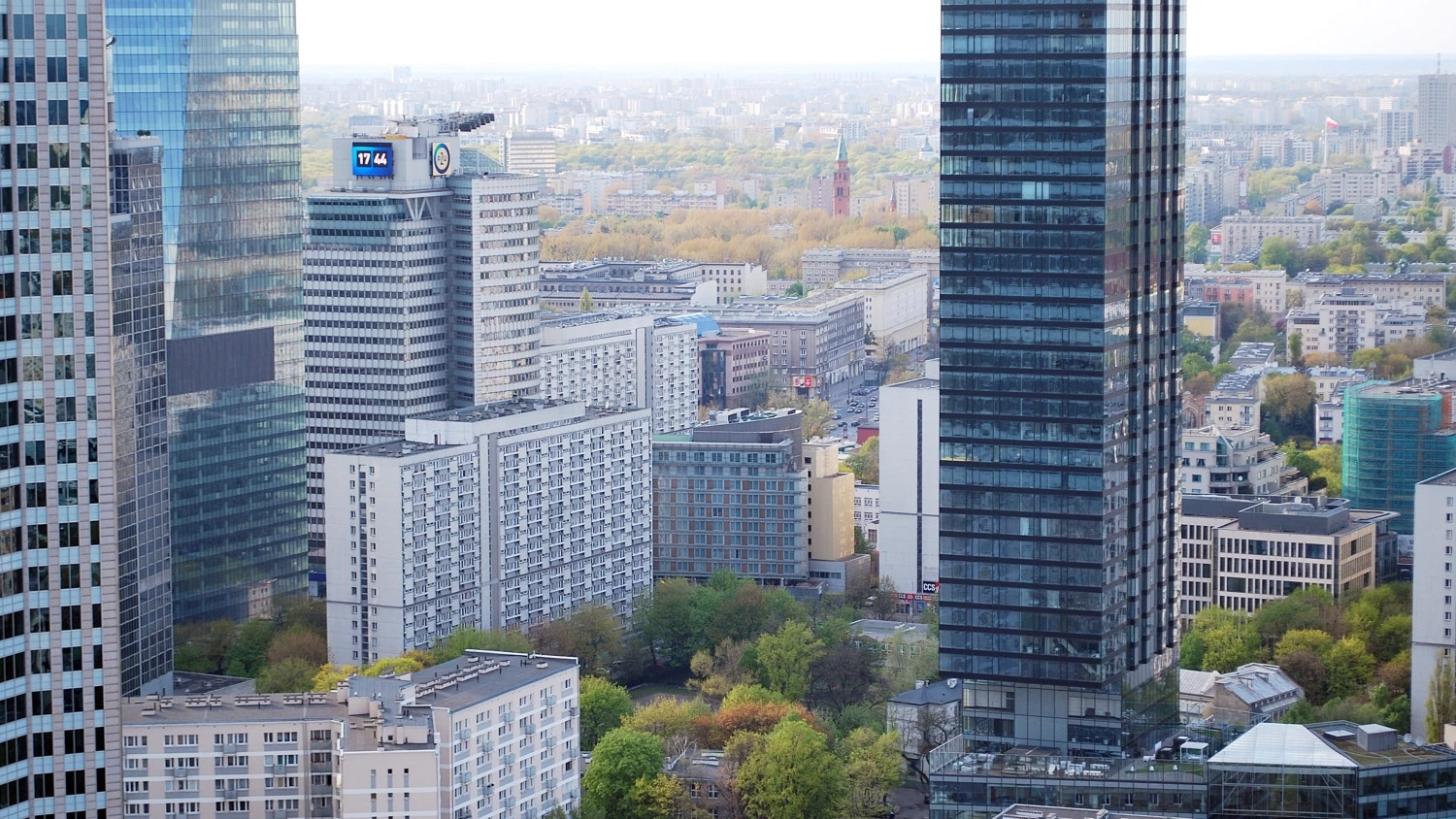
In 2020 the coronavirus pandemic pushed Poland into its first recession in 30 years following a GDP contraction of around 2.8%. According to Moody’s forecasts, implications of the second wave of the pandemic will reverberate through the economy also during the first quarter of 2021. The second quarter is, however, likely to see a recovery and this year’s GDP growth is expected to reach approximately 4%. Cushman & Wakefield summarised 2020 on the Warsaw office market.
Supply: more than 300,000 sqm of office space delivered to the market in 2020
In 2020, Warsaw saw 314,000 sqm of office space come on stream, bringing the capital’s total office stock to 5.91 million sqm. Last year’s largest office completions included Ghelamco’s mixed-use project The Warsaw Hub (buildings B and C with 43,400 sqm and 45,600 sqm, respectively), Golub Get House’s Mennica Legacy Tower (47,900 sqm) and HB Reavis’ Varso II (39,900 sqm). Warsaw’s office development pipeline stands at close to 550,000 sqm which is due for delivery in 2021-2022. Cushman & Wakefield estimates that nearly 320,000 sqm will be added to the market in 2021, followed by approximately 230,000 sqm in 2022.
“Given the current pandemic situation and subdued occupier activity, we expect a limited number of new projects coming onto the market in 2023-2024, which is likely to result in an undersupply in this period,” says Jan Szulborski, Senior Consultant, Consulting & Research, Cushman & Wakefield.
Vacancy rate: continued albeit slower growth
Economic uncertainty and occupier caution have caused Warsaw’s vacancy rate to reverse its downward trend of 2016-2019. Unoccupied office space increased by approximately 148,500 sqm over the last 12 months, bringing the city’s total amount of vacant space to 583,500 sqm at the end of 2020. New office completions attracted robust occupier interest, with their vacancy rates averaging 15% upon delivery to the market. This was largely due to a record-breaking volume of pre-lets concluded or commenced in the pre-pandemic environment.
The higher space availability pushed the overall office vacancy rate up by 2.1 pp year-on-year to 9.9% at the end of Q4 2020. In addition, the Warsaw office market has witnessed an increase in sublease listings ever since the pandemic began. The total volume of office space for subletting is estimated to have surpassed 108,000 sqm at the end of Q4 2020, up by 16,800 sqm on the third quarter.
Take-up: occupier activity declines less than expected
The lockdown period and the uncertainty of the economic impact of the coronavirus pandemic pushed some tenants to put on hold their decisions regarding lease negotiations. Gross take-up hit 602,000 sqm in 2020, representing a 31% decrease on 2019’s level.
“Although the transaction volume appears to have fallen sharply year-on-year in percentage terms, it is worth noting that office take-up hit an all-time high of close to 880,000 sqm in 2019 while preliminary forecasts indicated a 40-50% decrease in leasing activity in 2020. The fourth quarter of 2020 alone saw 160,400 sqm transacted, down by just 16% on the same period a year earlier,” says Katarzyna Lipka, Head of Consulting & Research, Cushman & Wakefield.
The structure of occupier demand changed during 2020. While new lease agreements accounted on average for 61% of all transactions in the previous five years, their share was down to 54% last year. At the same time, the proportion of lease renegotiations rose from 29% to 37%.
“We expect this trend to continue in the coming quarters as some tenants may opt for short-term extensions before making any long-term commitments,” adds Katarzyna Lipka.
Rental rates: subdued occupier activity and increased space availability push prime office rents down
Prime headline rents stand at €23.50/sqm/month in the Centre and at €14.75/sqm/month in non-central locations, representing a decrease of €0.50 and 0.25/sqm/month over the year, respectively. This was down to the worsening sentiment of market participants.
“Looking ahead, headline rents are expected to stabilize in the coming quarters as incentive packages are scaled up to include longer rent-free periods and more generous fit-out contributions, all leading to more pressure on effective rents,” says Jan Szulborski.



